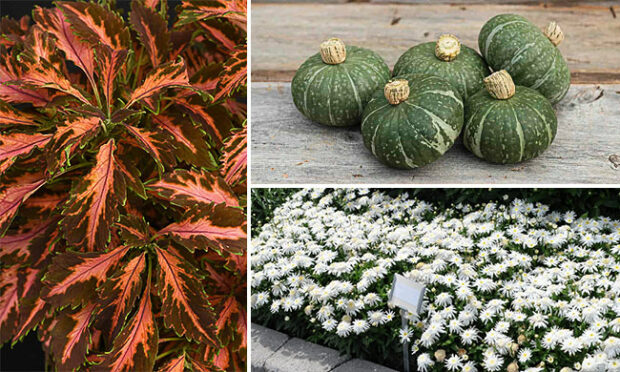by Mary Gerstenberger
Autumn in the vegetable patch is a busy time. Cold-sensitive veggies such as tomatoes and peppers need to be harvested before first frost, or to extend their season, cover them with a sheet or tarp on nights when a frost is predicted. Cold tolerant plants such as radishes and lettuce can still be planted. Late in September is the time to plant garlic cloves for next year’s harvest. More importantly, autumn is the time when garden cleanup as well as garden preparation begins.
Good garden cleanup is fundamental to having a healthy garden next year. Many types of fungal spores as well as insects can overwinter in the leaf litter and soil. Plants that showed signs of disease should be removed from the garden along with any plant debris around them. Healthy plant remains can be composted or turned back into the soil to return their nutrients to the garden.
The cleanup we do in the fall is the first step in preparing the spring garden. Not only can the remains of our vegetable plants be dug into the garden, but autumn leaves and grass clippings as well. These help provide organic matter, which is important to good soil structure and healthy plants. Another way to provide organic matter and nutrients is to plant a cover crop such as oats or annual rye that can be turned into the soil in the spring. A layer of compost can be spread over or tilled into the garden as another option to enrich and improve the soil.
After cleanup, the second step in preparing the garden is to plan ahead. Take note of where you planted your different vegetables this year so you can plan to rotate them to a new spot next year. Planting closely related crops in the same part of the garden each year can lead to recurring problems with plant diseases as well as insect issues.
Autumn can be a hectic time in the garden as we harvest our vegetables and work at extending the growing season. However, with a little extra effort now, we can look forward to a quicker, better start to our garden in the spring.
Mary Gerstenberger was the Consumer Horticulture Coordinator at the Michigan State University Extension in Macomb County, MI. For vegetable and gardening information from MSU, visit www.migarden.msu.edu.
Call the toll-free Michigan State University Lawn and Garden Hotline at 888-678-3464 for answers to your gardening questions.
RELATED: Cut and come again vegetable harvesting technique
ELSEWHERE: Why test soil in the fall?

